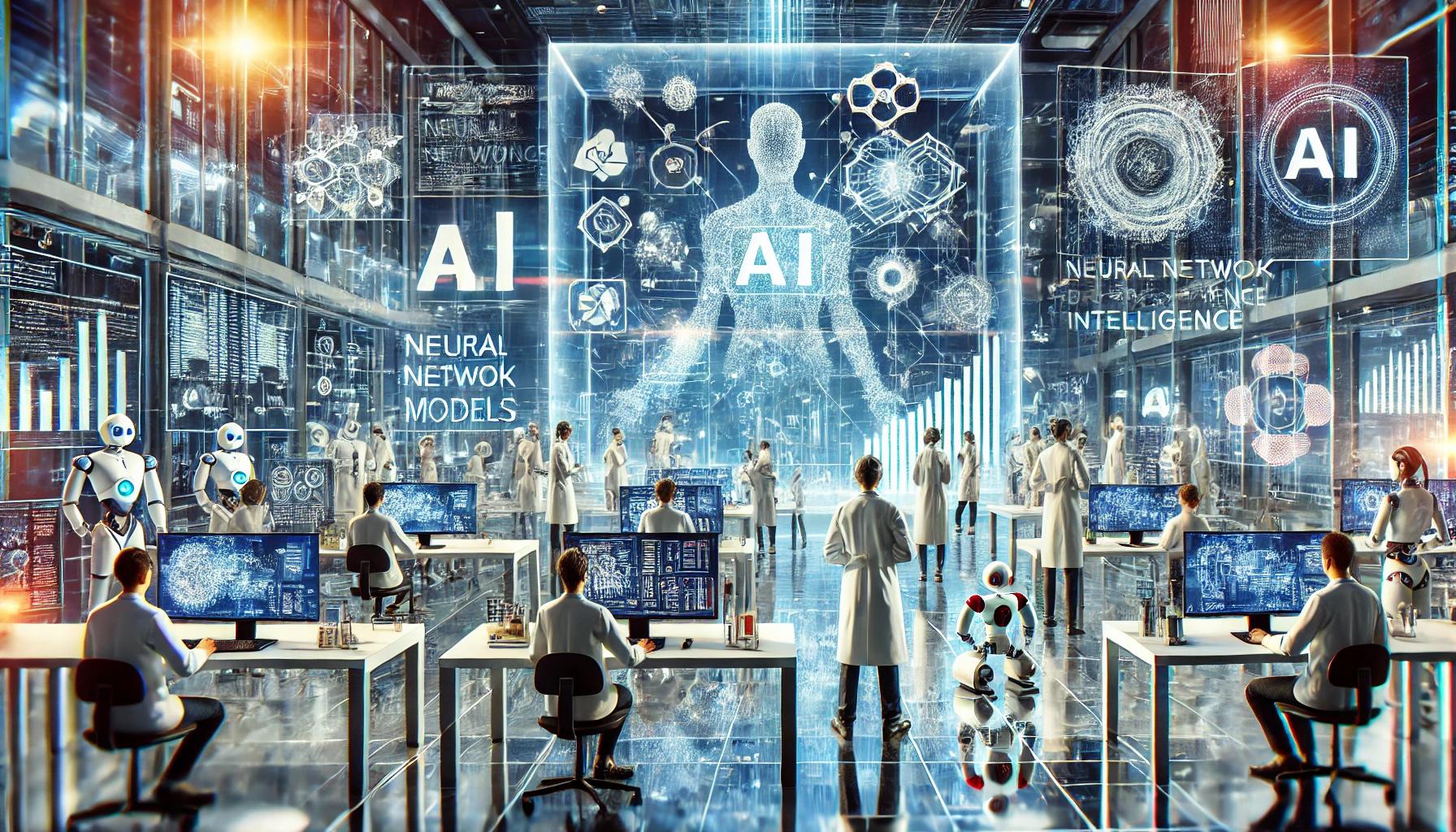- Brief Overview of the Current State of Social Media
- Introduction to the Role of AI in Social Media
- AI-Driven Personalization
- How AI Algorithms Personalize Content Feeds
- The Impact of Personalized Recommendations on User Engagement
- Examples of AI-Powered Recommendation Systems
- Content Creation and Curation
- AI Tools for Content Creation
- Automated Content Curation and Its Benefits
- Case Studies of Successful AI-Driven Content Strategies
- Enhancing User Experience
- AI in Customer Support (Chatbots and Virtual Assistants)
- Sentiment Analysis for Improving User Interactions
- Predictive Analytics for Proactive User Engagement
- Targeted Advertising
- How AI Optimizes Ad Placements and Targeting
- The Role of Machine Learning in Ad Performance Analysis
- Ethical Considerations and Privacy Concerns
- Combatting Misinformation and Harmful Content
- AI Techniques for Detecting Fake News and Misinformation
- Moderation of Harmful Content Using AI
- The Balance Between Censorship and Free Speech
Brief Overview of the Current State of Social Media
Social media has become a fundamental aspect of modern life, with platforms like Facebook, Instagram, Twitter, and TikTok serving as primary channels for communication, entertainment, news, and commerce. According to Statista, there were approximately 4.26 billion social media users globally in 2023, a number that continues to rise. These platforms have revolutionized how we connect with others and consume content, creating a dynamic and ever-evolving digital landscape.
The proliferation of social media has brought about significant opportunities and challenges. On the one hand, it enables instant communication and the sharing of information across the globe. On the other hand, the overwhelming volume of content can make it difficult for users to find relevant information. Additionally, issues such as misinformation, data privacy concerns, and the mental health impact of prolonged social media use are becoming increasingly prominent. Platforms are constantly evolving to address these challenges while enhancing user engagement and satisfaction.
Introduction to the Role of AI in Social Media
Artificial Intelligence (AI) is playing a transformative role in the evolution of social media, addressing many of the challenges associated with the vast and dynamic nature of these platforms. AI technologies are being leveraged to enhance user experience, improve content delivery, and ensure safer online environments.
One of the primary applications of AI in social media is content personalization. AI algorithms analyze user behavior and preferences to curate personalized content feeds, ensuring that users see posts that are most relevant to them. For instance, platforms like Instagram and TikTok use machine learning models to recommend content based on past interactions, significantly boosting user engagement.
AI also facilitates content creation and curation. Tools developed by companies like OpenAI enable the generation of high-quality text, images, and videos, simplifying the content creation process for both individuals and businesses. For example, AI-powered writing assistants can help generate compelling social media posts, while tools like DALL-E can create unique images based on textual descriptions.
Moreover, AI is instrumental in combating misinformation and harmful content. Machine learning algorithms are employed to detect and remove fake news, hate speech, and other inappropriate content, helping to maintain a safer and more trustworthy online environment. Platforms such as Facebook and Twitter have implemented AI-driven moderation systems to automatically flag and review potentially harmful posts.
In addition to these applications, AI enhances customer service on social media through chatbots and virtual assistants. These AI-driven tools provide instant responses to user queries, improving customer satisfaction and reducing the workload on human support teams. Companies like Zendesk offer AI-powered solutions that integrate seamlessly with social media platforms to provide efficient customer support.
AI-Driven Personalization
How AI Algorithms Personalize Content Feeds
Artificial Intelligence (AI) algorithms play a crucial role in personalizing content feeds on social media platforms. These algorithms analyze vast amounts of data, including user behavior, preferences, interactions, and demographics, to create a tailored experience for each user. Machine learning models, such as collaborative filtering and deep learning, are commonly used to predict what content a user is likely to engage with.
For instance, AI algorithms track the types of posts a user likes, shares, and comments on, as well as the time spent on different types of content. By continuously learning from this data, the algorithms refine their recommendations to ensure that the content displayed in the user’s feed is increasingly relevant and engaging. This personalization process is dynamic and adaptive, constantly evolving based on the user’s changing preferences and behaviors.
The Impact of Personalized Recommendations on User Engagement
Personalized recommendations have a profound impact on user engagement. By showing users content that aligns with their interests, social media platforms can significantly enhance the user experience, encouraging more interaction and time spent on the platform. Personalized feeds keep users engaged by presenting them with content that is not only relevant but also diverse, maintaining their interest over extended periods.
Studies have shown that personalized content leads to higher engagement rates, including increased likes, shares, comments, and overall time spent on the platform. For businesses and advertisers, this translates into better reach and effectiveness of their marketing efforts. According to a report by HubSpot, 74% of marketers believe targeted personalization increases customer engagement.
However, there are also challenges associated with personalized recommendations. The “filter bubble” effect, where users are only exposed to content that reinforces their existing beliefs, is a significant concern. Platforms are working to balance personalization with content diversity to ensure users receive a well-rounded view of information.
Examples of AI-Powered Recommendation Systems
Several major social media platforms use sophisticated AI-powered recommendation systems to personalize content feeds:
- Facebook: Facebook’s recommendation system uses deep learning models to analyze user data and predict the content users will find most engaging. The platform considers various factors, including user interactions, post engagement, and relationships with other users, to tailor the news feed.
- Instagram: Instagram employs machine learning algorithms to curate a personalized feed for each user. The platform’s Explore page is a prime example of AI-driven personalization, showcasing posts and stories based on user preferences and past interactions.
- TikTok: TikTok’s recommendation system is known for its highly effective content personalization. The platform uses a combination of machine learning models to analyze user interactions, video likes, comments, and shares to create a personalized “For You” page. TikTok’s ability to quickly adapt to user preferences has contributed to its rapid growth and high user engagement rates.
Content Creation and Curation
AI Tools for Content Creation
AI tools are revolutionizing content creation by enabling the automatic generation of text, images, and videos, thereby simplifying the process for brands and social media managers. These tools use advanced machine learning models to understand and mimic human creativity, producing high-quality content that can engage audiences effectively.
- Text Generation: AI-powered writing assistants, like ChatGPT, can generate compelling social media posts, articles, and marketing copy. These tools analyze existing content to create text that matches the brand’s tone and style, saving time and ensuring consistency across posts.
- Image Creation: Tools like DALL-E can generate unique images based on textual descriptions. This capability allows brands to create custom visuals without the need for a graphic designer, enhancing their social media content with eye-catching images tailored to their specific needs.
- Video Creation: AI-driven platforms such as Lumen5 transform text content into engaging videos by automatically selecting relevant images, video clips, and music. These tools enable brands to produce professional-looking videos quickly and easily, making video marketing accessible to businesses of all sizes.
Automated Content Curation and Its Benefits
Automated content curation involves using AI algorithms to select and organize content from various sources, presenting it in a cohesive and relevant manner. This process has several benefits for brands and social media management:
- Time Efficiency: Automated curation tools save time by continuously scanning the web for relevant content, eliminating the need for manual searching and selection. This allows social media managers to focus on strategy and engagement rather than content discovery.
- Relevance: AI algorithms analyze user behavior and preferences to curate content that is most likely to resonate with the audience. This ensures that the curated content is relevant and valuable, increasing the likelihood of engagement and shares.
- Diversity: Automated curation tools can aggregate content from a wide range of sources, providing a diverse mix of perspectives and topics. This helps brands maintain a well-rounded social media presence, appealing to a broader audience.
Case Studies of Successful AI-Driven Content Strategies
- Coca-Cola: Coca-Cola has leveraged AI to enhance its social media content strategy. By using AI tools for content creation and curation, the brand has been able to produce personalized marketing campaigns that resonate with different audience segments. For instance, Coca-Cola’s AI-driven campaign for the FIFA World Cup generated personalized videos for fans, boosting engagement and brand loyalty.
- Sephora: Sephora, a leading beauty retailer, utilizes AI to create personalized beauty recommendations and tutorials. The brand’s AI-powered app, Sephora Virtual Artist, allows users to try on makeup virtually and receive customized product suggestions. This innovative use of AI not only enhances the shopping experience but also drives social media engagement through user-generated content and interactive posts.
- The New York Times: The New York Times has implemented AI-driven content curation to enhance its social media presence. By using algorithms to select and promote articles that are most likely to engage readers, the publication has seen increased traffic and interaction on its social media platforms. The curated content aligns with the interests of their audience, ensuring relevance and boosting overall engagement.
Enhancing User Experience
AI in Customer Support (Chatbots and Virtual Assistants)
AI is transforming customer support on social media through the use of chatbots and virtual assistants. These AI-driven tools provide instant, efficient, and personalized responses to customer inquiries, significantly enhancing the user experience.
- Chatbots: Chatbots are designed to handle common customer service tasks, such as answering frequently asked questions, processing orders, and providing product information. They use natural language processing (NLP) to understand and respond to customer queries in a conversational manner. Platforms like Zendesk offer AI-powered chatbots that can be integrated into social media channels, providing round-the-clock support and reducing the workload on human agents.
- Virtual Assistants: Virtual assistants go a step further by offering more advanced capabilities, such as personalized recommendations and complex issue resolution. For example, Drift provides AI-driven virtual assistants that can engage users in real-time, guiding them through their purchasing journey and offering tailored support based on their interactions and preferences.
By utilizing AI in customer support, brands can ensure quick and accurate responses to customer inquiries, enhancing satisfaction and loyalty. This also allows human agents to focus on more complex issues, improving overall efficiency and service quality.
Sentiment Analysis for Improving User Interactions
Sentiment analysis involves using AI to analyze and interpret the emotions expressed in user-generated content, such as comments, reviews, and messages. This technology enables brands to gain insights into how their audience feels about their products, services, and overall brand image.
- Understanding Customer Sentiment: AI-powered sentiment analysis tools, such as those offered by Lexalytics, can process large volumes of text data from social media platforms, identifying positive, negative, and neutral sentiments. This helps brands understand customer opinions and identify areas for improvement.
- Improving User Interactions: By monitoring sentiment in real-time, brands can quickly address negative feedback and capitalize on positive interactions. For example, if a product launch receives negative comments on social media, sentiment analysis can alert the brand to the issue, allowing them to respond promptly and address customer concerns. This proactive approach can mitigate potential PR crises and improve overall customer satisfaction.
- Enhancing Engagement: Sentiment analysis can also guide content strategy by highlighting topics and themes that resonate positively with the audience. Brands can use these insights to create more engaging and relevant content, fostering stronger connections with their followers.
Predictive Analytics for Proactive User Engagement
Predictive analytics leverages AI to analyze historical data and predict future user behavior. This technology enables brands to anticipate user needs and engage them proactively, enhancing the overall user experience.
- Anticipating Customer Needs: Predictive analytics tools, such as those provided by Hootsuite, analyze patterns in user behavior to forecast future actions. For example, if a user frequently interacts with content related to a specific product category, the brand can proactively offer personalized recommendations and promotions related to that category.
- Optimizing Content Timing: Predictive analytics can determine the best times to post content for maximum engagement. By analyzing user activity patterns, brands can schedule posts when their audience is most active, increasing the likelihood of interaction and visibility.
- Personalizing User Experiences: By predicting user preferences and behaviors, brands can tailor their interactions to meet individual needs. This can include personalized product recommendations, targeted advertisements, and customized content. For instance, Amazon uses predictive analytics to suggest products based on users’ browsing and purchase history, enhancing the shopping experience and driving sales.
Targeted Advertising
How AI Optimizes Ad Placements and Targeting
AI has revolutionized targeted advertising by optimizing ad placements and ensuring that advertisements reach the most relevant audiences. Through sophisticated algorithms and data analysis, AI can significantly enhance the effectiveness of advertising campaigns.
- Audience Segmentation: AI algorithms analyze vast amounts of data from user profiles, behavior, and interactions to segment audiences into specific groups based on demographics, interests, and behaviors. This allows advertisers to create highly targeted campaigns that resonate with each segment. For example, platforms like Facebook Ads use AI to identify and target users who are most likely to be interested in specific products or services.
- Real-Time Bidding (RTB): AI is integral to real-time bidding, where ad impressions are bought and sold in real-time auctions. AI algorithms assess the value of each impression based on user data and bid accordingly, ensuring that ads are placed where they are most likely to yield high engagement. Companies like Google Ads employ AI to optimize bidding strategies and ad placements, maximizing the return on investment (ROI) for advertisers.
- Contextual Targeting: AI-driven contextual targeting involves analyzing the content of web pages and matching ads to relevant content. This ensures that ads are shown in contexts where they are most likely to be effective. For instance, an AI system might place ads for running shoes on fitness blogs, enhancing relevance and increasing the likelihood of user engagement.
The Role of Machine Learning in Ad Performance Analysis
Machine learning plays a critical role in analyzing the performance of advertising campaigns, providing insights that help advertisers optimize their strategies.
- Performance Metrics: Machine learning models analyze a variety of performance metrics, such as click-through rates (CTR), conversion rates, and engagement levels, to evaluate the effectiveness of ads. Platforms like AdRoll use machine learning to provide detailed performance reports, highlighting which ads are performing well and which need adjustments.
- A/B Testing: Machine learning enables continuous A/B testing, where different versions of an ad are tested against each other to determine which performs better. AI algorithms analyze the results and identify the most effective elements of each ad, allowing advertisers to refine their campaigns. For example, HubSpot uses AI to automate A/B testing, helping businesses optimize their marketing efforts.
- Predictive Analytics: Machine learning models can predict future ad performance based on historical data. These predictions help advertisers anticipate trends and make data-driven decisions about budget allocation, ad creative, and targeting strategies. Tools like Kenshoo leverage predictive analytics to optimize advertising campaigns, ensuring that resources are invested in the most promising areas.
Ethical Considerations and Privacy Concerns
While AI-driven targeted advertising offers numerous benefits, it also raises important ethical considerations and privacy concerns that must be addressed.
- Data Privacy: Targeted advertising relies on the collection and analysis of vast amounts of user data, raising concerns about privacy and data security. Users may be unaware of the extent to which their data is being collected and used for advertising purposes. To address these concerns, regulations such as the General Data Protection Regulation (GDPR) in Europe and the California Consumer Privacy Act (CCPA) in the United States have been enacted to protect user privacy and give individuals more control over their data.
- Transparency: There is a need for greater transparency in how AI algorithms operate and make decisions regarding ad placements and targeting. Users should be informed about how their data is being used and why they are seeing certain ads. Initiatives like Google’s Ad Transparency Report aim to provide more insight into ad targeting practices.
- Bias and Discrimination: AI algorithms can inadvertently perpetuate bias and discrimination if not properly managed. For example, biased training data can lead to unfair targeting practices, where certain groups are disproportionately targeted or excluded from advertising. Advertisers and platforms must implement measures to detect and mitigate bias, ensuring that AI-driven advertising is fair and inclusive.
Combatting Misinformation and Harmful Content
AI Techniques for Detecting Fake News and Misinformation
AI social media platforms are increasingly employing advanced techniques to detect and combat fake news and misinformation. These techniques leverage machine learning and natural language processing (NLP) to analyze vast amounts of data and identify false or misleading content.
- Natural Language Processing (NLP): NLP algorithms can analyze the text of articles and social media posts to detect patterns indicative of fake news. By examining linguistic features, sentiment, and writing style, AI can differentiate between credible and dubious sources. Tools like AdVerif.ai use NLP to flag potentially harmful content before it spreads widely.
- Image and Video Analysis: AI systems can analyze multimedia content to verify its authenticity. For example, AI can detect deepfakes—manipulated videos that appear convincingly real—by analyzing inconsistencies in facial movements and audio-visual synchronization. Platforms like Deepware provide tools to detect deepfakes, helping to prevent the spread of manipulated media.
- Network Analysis: AI can analyze the spread of information across social networks to identify patterns characteristic of misinformation campaigns. By examining how content is shared and the connections between users, AI can detect coordinated efforts to spread false information. Tools like Graphika use network analysis to uncover and mitigate disinformation campaigns.
Moderation of Harmful Content Using AI
AI plays a crucial role in moderating harmful content on social media, ensuring a safer environment for users. Automated moderation systems can quickly identify and remove content that violates community guidelines, such as hate speech, harassment, and violent imagery.
- Real-Time Monitoring: AI-powered moderation tools can monitor social media platforms in real-time, scanning for harmful content. When such content is detected, the system can either remove it automatically or flag it for human review. Facebook employs AI to detect and remove millions of pieces of harmful content every day, ensuring a safer user experience.
- Machine Learning Models: Machine learning models are trained on vast datasets of harmful and benign content to recognize and classify new posts accurately. These models continuously improve as they are exposed to more data, becoming more effective at identifying subtle forms of harmful content. For example, YouTube uses machine learning to detect and demonetize videos that violate its policies.
- User Reporting and AI Assistance: AI can assist in the moderation process by prioritizing user reports based on the likelihood of policy violations. This ensures that the most urgent cases are addressed promptly. Platforms like Twitter use AI to triage user reports, improving the efficiency of their moderation teams.
The Balance Between Censorship and Free Speech
Balancing the need to combat misinformation and harmful content with the preservation of free speech is a significant challenge in social media marketing and management. While AI can help maintain a safe environment, it is essential to ensure that content moderation does not infringe on users’ rights to express their opinions.
- Transparency in AI Decision-Making: Social media platforms must be transparent about how their AI moderation systems work and the criteria used to flag and remove content. This transparency can help build trust with users and provide clarity on what constitutes a violation of community guidelines. Initiatives like Google’s AI Principles outline the ethical use of AI, emphasizing fairness and accountability.
- Appeals and Human Oversight: To prevent overreach, platforms should implement robust appeals processes that allow users to contest moderation decisions. Human oversight is crucial in these processes to ensure that AI-driven actions are reviewed and corrected if necessary. For instance, Instagram provides mechanisms for users to appeal content removal decisions.
- Ethical AI Development: Developing AI systems that can distinguish between harmful content and legitimate free speech is an ongoing challenge. Ethical AI development involves training models on diverse datasets and incorporating checks to minimize bias. Organizations like AI Now Institute advocate for responsible AI development that considers the societal impact of these technologies.





